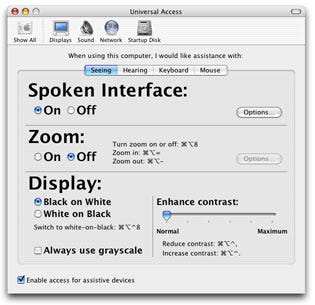The largest list of accessibility features

It’s difficult to put in perspective what Apple means when they say that the Apple Vision Pro “contains the largest list of accessibility features we’ve ever included in the first generation of a product”. So I went and listed the first 3 layers of accessibility features on the current visionOS and counted around 131 different settings. Some of them are levels of configuration of larger features, but most are functionalities designed to be mixed and matched and used in tandem.
Again, 131 combinable features appears to be a large enough amount, but for the sake of perspective, I tried to compare it to the Meta Quest 3 current options.
(To be entirely fair, there are additional elements that can improve accessibility in other parts of the settings, but the overall difference is tremendous.)
However, to fully respect the part of the first generation product “released by Apple,” we could compare it to the number of accessibility settings on the first iPhone. However, those settings weren’t available on the iPhone until the 3GS (iOS3). The first iPad was different, a much more accessible beast (contemporary with the iPhone 4G). On the Mac it is also interesting to note that some accessibility features can be traced back as early as Mac OS 8, but the most clear/consolidated sources I have being able to found so far is around the time of Mac OS X 10.3 (Panther) with the great Spoken Interface introduction.

So, as of now, I believe it is not an exaggeration to call the Vision Pro one of the most accessible first versions in history.
